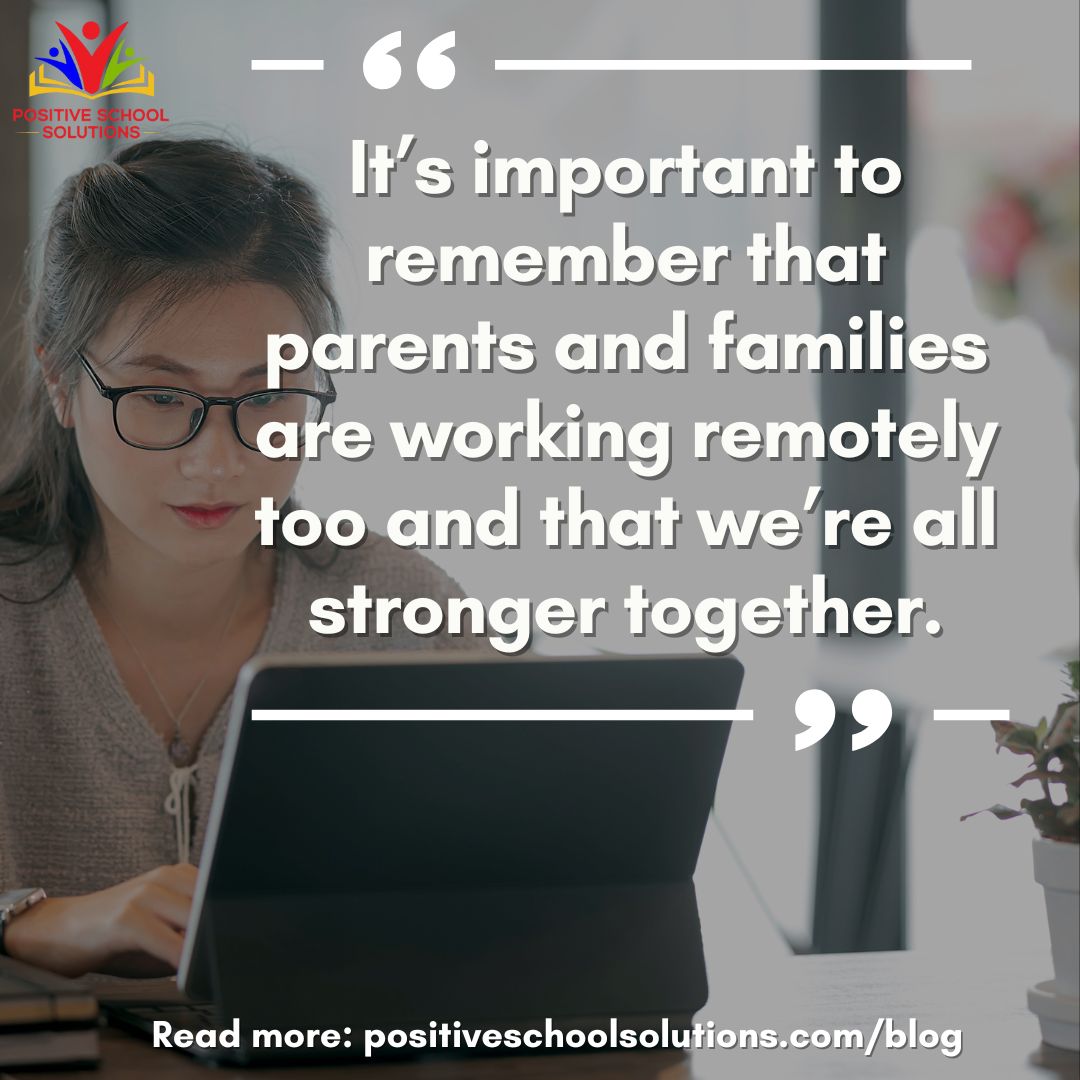 Keeping the characteristics of teacher language from our previous post in mind, here are some additional tips about providing feedback and maintaining connections with students during remote learning:
Keeping the characteristics of teacher language from our previous post in mind, here are some additional tips about providing feedback and maintaining connections with students during remote learning:
-
- Let students know you’re thinking of them regularly. Consider sending a brief note via email, your learning management system, or classroom messaging app to celebrate their growth and/or successes. Share with students what you’re missing about seeing them in person, and how excited you’ll be to see them again soon!
- Let students know you’re thinking of them regularly. Consider sending a brief note via email, your learning management system, or classroom messaging app to celebrate their growth and/or successes. Share with students what you’re missing about seeing them in person, and how excited you’ll be to see them again soon!
-
- Call students who need additional support in their learning and provide personalized, targeted instruction over the phone or through web conferencing.
- Call students who need additional support in their learning and provide personalized, targeted instruction over the phone or through web conferencing.
-
- Create a Google form for a quick survey about pacing, assignments, and preferences, for example, you might ask students:
-
- which learning activities they enjoyed in order to better understand their interests and learning preferences.
-
- what material they found to be most challenging.
-
- to assess their understanding & skill-development with content-based questions
-
- to work through problems or questions together with the student to hear their thinking and find opportunities for instruction.
- to work through problems or questions together with the student to hear their thinking and find opportunities for instruction.
-
- Create a Google form for a quick survey about pacing, assignments, and preferences, for example, you might ask students:
-
- Create a document with sentence starters you can use to expedite providing specific feedback on assignments. Brainstorm what you want students to do on the assignment and write them up as positive specific feedback. Then use those sentence starters as a template to personalize your feedback for each student. For example, if your goal is for students to include 5 descriptive words, one thing you might have on your list could be “You are really practicing using the descriptive words we have been learning about.” When writing to Mary about her assignment, you could personalize it further by saying “Mary, you used 6 descriptive words in your paragraph about your dog! You are practicing exactly what we have been learning about.”
- Create a document with sentence starters you can use to expedite providing specific feedback on assignments. Brainstorm what you want students to do on the assignment and write them up as positive specific feedback. Then use those sentence starters as a template to personalize your feedback for each student. For example, if your goal is for students to include 5 descriptive words, one thing you might have on your list could be “You are really practicing using the descriptive words we have been learning about.” When writing to Mary about her assignment, you could personalize it further by saying “Mary, you used 6 descriptive words in your paragraph about your dog! You are practicing exactly what we have been learning about.”
-
- Hold office hours where students can set up 10-minute appointments with you for one-on-one feedback or small group options.
- Hold office hours where students can set up 10-minute appointments with you for one-on-one feedback or small group options.
-
- Keep in touch with the community. It’s important to remember that parents and families are working remotely too and that we’re all stronger together. If possible, reach out to one—or more!—family per week to share something their student is doing well. Also, don’t hesitate to let parents/guardians know you appreciate them for supporting their child’s remote learning.
- Keep in touch with the community. It’s important to remember that parents and families are working remotely too and that we’re all stronger together. If possible, reach out to one—or more!—family per week to share something their student is doing well. Also, don’t hesitate to let parents/guardians know you appreciate them for supporting their child’s remote learning.
- Reach out to other teachers and school staff. Other teachers—colleagues and friends—are going through this transition as well. Use some of the same tools you use with students to connect with other teachers. For example, you might share some specific feedback you could offer to students while planning your online lessons for the week.
Written by Dana Januszka and Sarah Fillion 2020

